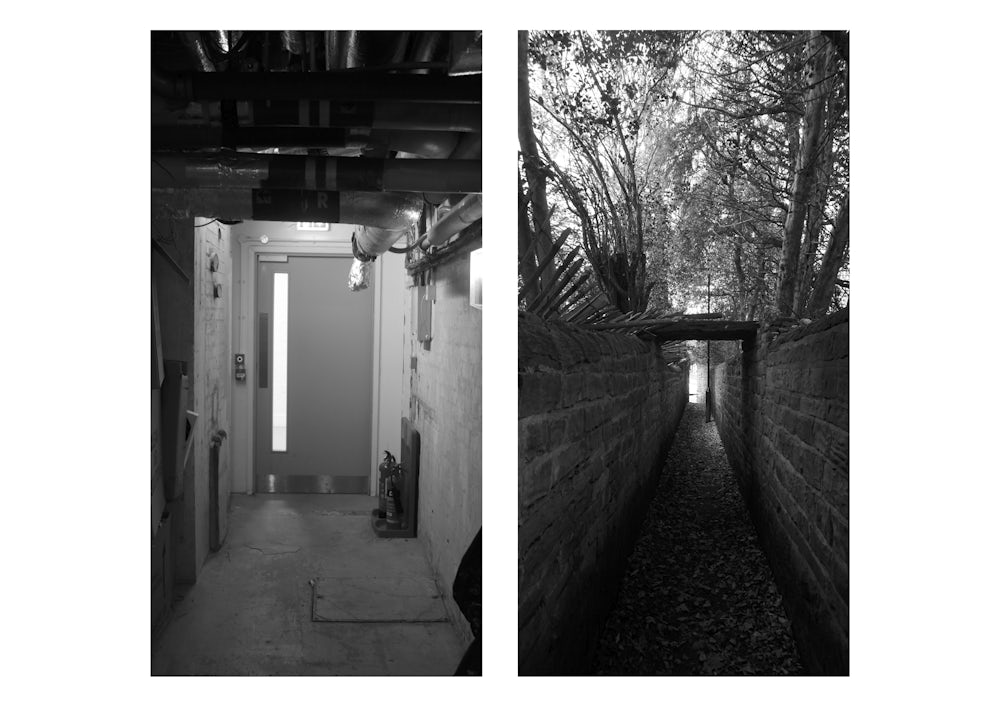Repair is commonly considered a response to errors and defects. It is seen only as a necessity that helps maintain the idea of buildings as self-cleaning, self-fixing systems. Maintenance work is usually performed outside operating hours, hidden behind doors, corridors, and alleyways. This project seeks to draw a comparison between the remnants of the industrial past, like the ginnels of West Yorkshire, with back-of-house facilities in institutional buildings, to understand how isolated, narrow spaces for repair and labour have contributed to the marginalisation of essential professions over time, despite their significance to both infrastructure and societal ideals.
The production of textiles in Yorkshire began in the 1780s, and by the end of the 19th century it became the dominant industry within the West Riding. The cotton, linen, and wool produced were pristine in their finished form, however the human cost for such perfection was immense: harsh working conditions, tireless shifts, limited agency. This pain was woven into the fabrics themselves, the labour inseparable from the product, yet while the cloth was valued the workers were not.
As fabric production expanded, so did the demand for amenities to house the growing mill worker population. Stoney back to back housing began to engulf the landscape, with cobbled streets and paths directing the workers to and from their mill. Now, centuries removed from the initial industrial boom, the mills have ceased production, the worker’s houses have merged into the suburban fabric, the cobbled paths transformed into tarmac roads. However, the spaces in-between remained, networks of alleyways carved into the city that once gave direct paths to factories, now silent and overgrown. The ginnels are a tangible representation of unseen labour, charged with history and preserved only due to its unobtrusive nature.
Today, the city is fixed, and labour too fragmented to allow for the creation of ginnels. However, at the scale of a building, there are spaces which perform a similar task. Plant rooms, cleaning cupboards and maintenance rooms are always hidden away in the back-of-house, banished to the institutional margins. These spaces and passages are necessary for the upkeep, repair and support of buildings, yet their users are required to keep out of sight, operating at hours that minimise interactions with others, giving the false impression of a self-cleaning, self-fixing system.
Most buildings in the UK exist in one of two ways in relation to the passage of time. The first, the contemporary mode, considers the building as something which should exist in a continuous and unchanging present. The building is finished at the moment that construction is complete, and any ageing or wear and tear requiring significant maintenance is understood as the product of error: poor workmanship or poor design.1
In this context, the impossibility of achieving that stable and perfectly maintained built environment becomes a point of entry for exploring the deeper networks of labour involved in keeping things running, networks whose relegation to the peripheries has been normalised. This project argues that maintenance is not just about fixing what is broken, it is also about reconciling with the passage of time and making peace with the imperfection inherent in all systems, both human and architectural. Narrow spaces of labour, repair and sanitation are a medium through which we address the invisible, forgotten infrastructures that sustain us, both past and present.
The places I decided to explore cannot be found through Google Maps and are not shown on building directories. In order to locate the narrow spaces of labour, I followed written directions and contacted people who knew of their whereabouts. My exploration resulted in photographic documentation. Apart from having similar roles in the built environment, the spaces shared similar qualities - they were awkward to navigate in, narrow, and deliberately difficult to locate. The concept of a diptych emerged from both comparing my physical experience within these spaces, and also drawing similarities between their respective utility.
1 Gormley, Paloma, et al. Material Reform: Building for a Post-Carbon Future. 2022.












